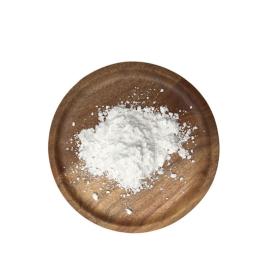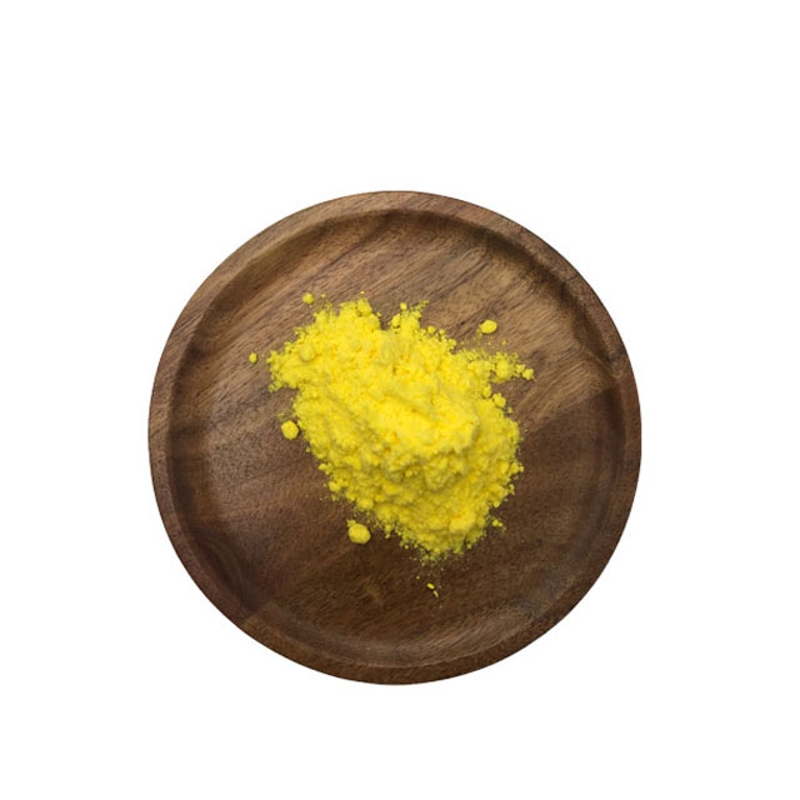-
Categories
-
Pharmaceutical Intermediates
-
Active Pharmaceutical Ingredients
-
Food Additives
- Industrial Coatings
- Agrochemicals
- Dyes and Pigments
- Surfactant
- Flavors and Fragrances
- Chemical Reagents
- Catalyst and Auxiliary
- Natural Products
- Inorganic Chemistry
-
Organic Chemistry
-
Biochemical Engineering
- Analytical Chemistry
- Cosmetic Ingredient
-
Pharmaceutical Intermediates
Promotion
ECHEMI Mall
Wholesale
Weekly Price
Exhibition
News
-
Trade Service
Editor’s note iNature is China’s largest academic official account.
It is jointly created by the doctoral team of Tsinghua University, Harvard University, Chinese Academy of Sciences and other units.
The iNature Talent Official Account is now launched, focusing on talent recruitment, academic progress, scientific research information, and interested parties.
Long press or scan the QR code below to follow us.
iNature chemotherapy resistance is the main reason for clinical treatment failure and poor prognosis of triple negative breast cancer (TNBC).
The research on breast cancer-related circRNA is still in its infancy, and circRNA related to chemosensitivity in TNBC has not been reported yet.
Therefore, further exploration of the chemotherapy resistance of TNBC from the perspective of circRNAs will help to reveal the potential new mechanism of the occurrence and development of TNBC resistance, and provide new ideas for clinical diagnosis and treatment.
On March 1, 2021, Zhang Lifeng and Chen Yan from Soochow University published an online report titled "CircWAC induces chemotherapeutic resistance in triple-negative breast cancer by targeting miR-142, upregulating WWP1 and activating the PI3K in Molecular Cancer (IF=15.
30).
/AKT pathway" research paper, the study found that CircWAC is highly expressed in TNBC and is associated with a worse prognosis of TNBC patients.
Subsequently, it was confirmed that the down-regulation of circWAC can increase the sensitivity of TNBC cells to paclitaxel (PTX) in vitro and in vivo.
The expression of miR-142 in TNBC is negatively correlated with circWAC.
RNA immunoprecipitation assay, luciferase reporter gene assay, pull-down assay and fluorescence in situ hybridization confirmed the interaction between circWAC and miR-142 in TNW cells.
In terms of mechanism, circWAC acts as a "sponge" of miR-142 to reduce the inhibitory effect of miR-142 on WWP1.
In addition, the overall survival rate of TNBC patients with high miR-142 expression is significantly better than that of TNBC patients with low miR-142 expression.
These results have been verified in public databases.
MiR-142 regulates the expression of WWP1 and the activity of PI3K/AKT pathway.
It is confirmed that WWP1 is highly expressed in TNBC, and the prognosis of patients with high WWP1 expression is poor.
In conclusion, CircWAC/miR-142/WWP1 forms a competitive endogenous RNA (ceRNA) network to regulate PI3K/AKT signaling activity in TNBC cells and affect cell chemosensitivity.
As a malignant tumor that occurs in breast epithelial tissue, approximately 99% of breast cancers occur in women.
According to GLOBOCAN data, in 2018, there were approximately 2.
1 million new cases of breast cancer worldwide, accounting for 11.
6% of the total number of cancer diagnoses, and approximately 630,000 deaths, accounting for 6.
6% of the total number of cancer deaths; therefore, breast cancer is the incidence of female cancer.
The highest rate.
From 2003 to 2014, the incidence and mortality of breast cancer in China increased year by year, which seriously affected women's health and life expectancy.
In China, there were approximately 270,000 new cases of breast cancer and 70,000 deaths in 2015.
Triple negative breast cancer (TNBC) accounts for 15-20% of breast cancers and is one of the most unique types of breast cancer.
Its biological behavior, onset characteristics and prognosis are different from those of other molecular subtypes of breast cancer.
TNBC tissues are negative for ER, PR and HER-2; therefore, their sensitivity to endocrine therapy, molecular targeted therapy and chemotherapy is reduced, which increases the difficulty of clinical treatment.
So far, surgery, radiotherapy and chemotherapy are the main treatment methods for TNBC.
In clinical practice, adjuvant chemotherapy based on anthracyclines and paclitaxel (PTX) is still the main treatment method, but the development of chemotherapy resistance is still the main reason for clinical treatment failure and poor prognosis of breast cancer patients.
The 5-year survival of TNBC The rate is significantly lower than that of non-TNBC breast cancer.
Therefore, there is an urgent need to improve the efficacy of TNBC treatment and prolong the survival time of patients.
At present, with the development of high-throughput sequencing technology, Rnomics has gradually become the focus of attention.
Circular RNA (circRNA) is a new type of RNA molecule that is different from traditional linear RNA.
They have a closed-loop structure and are relatively abundant in the eukaryotic transcriptome.
CircRNA is usually formed by cleavage and circularization of host gene exons or introns.
Their closed-loop structure is not sensitive to RNase R.
Therefore, they are more stable than linear RNA and can be used as tumor markers and potential targets in clinical applications.
In recent studies, circRNA has been found to play an important regulatory role in tumorigenesis and tumor development.
For example, ciRS-7 up-regulates the expression of oncogenes such as mTOR, EGFR and PIK3CD by sponging miR-7, and is involved in the progression of neuroblastoma and kidney cancer.
The research on breast cancer-related circRNA is still in its infancy, and circRNA related to chemosensitivity in TNBC has not been reported yet.
Therefore, further exploration of the chemotherapy resistance of TNBC from the perspective of circRNAs will help to reveal the potential new mechanism of the occurrence and development of TNBC resistance, and provide new ideas for clinical diagnosis and treatment.
In this study, the differentially expressed circRNAs in TNBC were screened, and circRNAs related to TNBC were identified based on the GSE101124 data set.
Combining these results with the results in TNBC patient specimens from the First Affiliated Hospital of Soochow University, it was found that circWAC is highly expressed in TNBC, and its expression level is positively correlated with the prognosis of TNBC.
In other words, the higher the expression of circWAC, the worse the prognosis of TNBC patients.
In vivo and in vitro experiments have confirmed that the down-regulation of circWAC in TNBC will increase the sensitivity of cells to PTX chemotherapy.
Subsequently, it was confirmed from the mechanism that circWAC indirectly up-regulated the expression of miR-142's target gene WWP1, and activated the PI3K/AKT pathway by competitively binding miR-142, leading to chemotherapy resistance of TNBC.
In conclusion, CircWAC/miR-142/WWP1 forms a competitive endogenous RNA (ceRNA) network to regulate PI3K/AKT signaling activity in TNBC cells and affect cell chemosensitivity.
Reference message: https://molecular-cancer.
biomedcentral.
com/articles/10.
1186/s12943-021-01332-8
It is jointly created by the doctoral team of Tsinghua University, Harvard University, Chinese Academy of Sciences and other units.
The iNature Talent Official Account is now launched, focusing on talent recruitment, academic progress, scientific research information, and interested parties.
Long press or scan the QR code below to follow us.
iNature chemotherapy resistance is the main reason for clinical treatment failure and poor prognosis of triple negative breast cancer (TNBC).
The research on breast cancer-related circRNA is still in its infancy, and circRNA related to chemosensitivity in TNBC has not been reported yet.
Therefore, further exploration of the chemotherapy resistance of TNBC from the perspective of circRNAs will help to reveal the potential new mechanism of the occurrence and development of TNBC resistance, and provide new ideas for clinical diagnosis and treatment.
On March 1, 2021, Zhang Lifeng and Chen Yan from Soochow University published an online report titled "CircWAC induces chemotherapeutic resistance in triple-negative breast cancer by targeting miR-142, upregulating WWP1 and activating the PI3K in Molecular Cancer (IF=15.
30).
/AKT pathway" research paper, the study found that CircWAC is highly expressed in TNBC and is associated with a worse prognosis of TNBC patients.
Subsequently, it was confirmed that the down-regulation of circWAC can increase the sensitivity of TNBC cells to paclitaxel (PTX) in vitro and in vivo.
The expression of miR-142 in TNBC is negatively correlated with circWAC.
RNA immunoprecipitation assay, luciferase reporter gene assay, pull-down assay and fluorescence in situ hybridization confirmed the interaction between circWAC and miR-142 in TNW cells.
In terms of mechanism, circWAC acts as a "sponge" of miR-142 to reduce the inhibitory effect of miR-142 on WWP1.
In addition, the overall survival rate of TNBC patients with high miR-142 expression is significantly better than that of TNBC patients with low miR-142 expression.
These results have been verified in public databases.
MiR-142 regulates the expression of WWP1 and the activity of PI3K/AKT pathway.
It is confirmed that WWP1 is highly expressed in TNBC, and the prognosis of patients with high WWP1 expression is poor.
In conclusion, CircWAC/miR-142/WWP1 forms a competitive endogenous RNA (ceRNA) network to regulate PI3K/AKT signaling activity in TNBC cells and affect cell chemosensitivity.
As a malignant tumor that occurs in breast epithelial tissue, approximately 99% of breast cancers occur in women.
According to GLOBOCAN data, in 2018, there were approximately 2.
1 million new cases of breast cancer worldwide, accounting for 11.
6% of the total number of cancer diagnoses, and approximately 630,000 deaths, accounting for 6.
6% of the total number of cancer deaths; therefore, breast cancer is the incidence of female cancer.
The highest rate.
From 2003 to 2014, the incidence and mortality of breast cancer in China increased year by year, which seriously affected women's health and life expectancy.
In China, there were approximately 270,000 new cases of breast cancer and 70,000 deaths in 2015.
Triple negative breast cancer (TNBC) accounts for 15-20% of breast cancers and is one of the most unique types of breast cancer.
Its biological behavior, onset characteristics and prognosis are different from those of other molecular subtypes of breast cancer.
TNBC tissues are negative for ER, PR and HER-2; therefore, their sensitivity to endocrine therapy, molecular targeted therapy and chemotherapy is reduced, which increases the difficulty of clinical treatment.
So far, surgery, radiotherapy and chemotherapy are the main treatment methods for TNBC.
In clinical practice, adjuvant chemotherapy based on anthracyclines and paclitaxel (PTX) is still the main treatment method, but the development of chemotherapy resistance is still the main reason for clinical treatment failure and poor prognosis of breast cancer patients.
The 5-year survival of TNBC The rate is significantly lower than that of non-TNBC breast cancer.
Therefore, there is an urgent need to improve the efficacy of TNBC treatment and prolong the survival time of patients.
At present, with the development of high-throughput sequencing technology, Rnomics has gradually become the focus of attention.
Circular RNA (circRNA) is a new type of RNA molecule that is different from traditional linear RNA.
They have a closed-loop structure and are relatively abundant in the eukaryotic transcriptome.
CircRNA is usually formed by cleavage and circularization of host gene exons or introns.
Their closed-loop structure is not sensitive to RNase R.
Therefore, they are more stable than linear RNA and can be used as tumor markers and potential targets in clinical applications.
In recent studies, circRNA has been found to play an important regulatory role in tumorigenesis and tumor development.
For example, ciRS-7 up-regulates the expression of oncogenes such as mTOR, EGFR and PIK3CD by sponging miR-7, and is involved in the progression of neuroblastoma and kidney cancer.
The research on breast cancer-related circRNA is still in its infancy, and circRNA related to chemosensitivity in TNBC has not been reported yet.
Therefore, further exploration of the chemotherapy resistance of TNBC from the perspective of circRNAs will help to reveal the potential new mechanism of the occurrence and development of TNBC resistance, and provide new ideas for clinical diagnosis and treatment.
In this study, the differentially expressed circRNAs in TNBC were screened, and circRNAs related to TNBC were identified based on the GSE101124 data set.
Combining these results with the results in TNBC patient specimens from the First Affiliated Hospital of Soochow University, it was found that circWAC is highly expressed in TNBC, and its expression level is positively correlated with the prognosis of TNBC.
In other words, the higher the expression of circWAC, the worse the prognosis of TNBC patients.
In vivo and in vitro experiments have confirmed that the down-regulation of circWAC in TNBC will increase the sensitivity of cells to PTX chemotherapy.
Subsequently, it was confirmed from the mechanism that circWAC indirectly up-regulated the expression of miR-142's target gene WWP1, and activated the PI3K/AKT pathway by competitively binding miR-142, leading to chemotherapy resistance of TNBC.
In conclusion, CircWAC/miR-142/WWP1 forms a competitive endogenous RNA (ceRNA) network to regulate PI3K/AKT signaling activity in TNBC cells and affect cell chemosensitivity.
Reference message: https://molecular-cancer.
biomedcentral.
com/articles/10.
1186/s12943-021-01332-8







